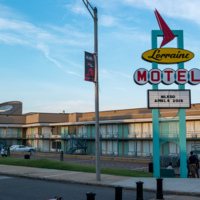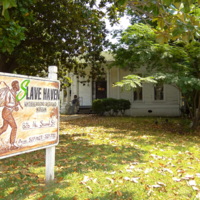
National Civil Rights Museum
The National Civil Rights Museum is housed in the Lorraine Motel, where civil rights leader Dr. Martin Luther King Jr. was assassinated on 4 April, 1968. It was founded in 1991 with the mission of sharing and raising awareness about the lessons and legacies from the Civil Rights Movement. The museum makes use of historic collections and a range of interactive exhibits, including film and audio, to tell these stories. Recently renovated in 2013-14, the museum is one of the top rated by the American Alliance of Museums and was a founding member of the International Coalition of Sites of Conscience.
The museum has five permanent exhibitions that include 260 artefacts, 40 film installations, oral histories and interactive media to guide visitors through five centuries of history. The exhibitions explore Civil Rights protest techniques- including sit ins, bus boycotts and freedom rides- as well as the Black Power movement and the assasination of Martin Luther King Jr. and its aftermath on the Civil Rights movement.
The first exhibition that visitors enter explores the longer 'Culture of Resistance' that was present in the United States prior to the Civil Rights movement, as seen through resistance to the system of slavery that dominated the country for centuries. Focussing on the period 1619-1869, the exhibition includes large scale interactive maps that emphasise the global impact of the transatlantic slave trade. There are films and art installations in the form of sculptures that show the terrible conditions inflicted on the enslaved people. Illuminated channels provide statistics and further information, including the number of people captured, goods cultivated and wealth created.
The museum also has facilities for temporary exhibitions, both on the site and online, and runs an immersive education programme for both children and adults.

Slave Haven Underground Railroad Museum
The Slave Haven Underground Railroad Museum opened in 1997 on the Burkle Estate- an historic house in Memphis. Originally built by a German immigrant, Joseph Burkle, the building is thought to have been part of the Underground Railroad, offering safe harbour to the enslaved on their escape route through the USA to Canada. Made up of period, nineteenth-century room settings, the museum documents the history of the Underground Railroad and the possible role of the house in that network. It also features displays about the system of transatlantic slavery, slave auctions and the everyday life of slaves in the wider Memphis area using collections of artefacts and archival material, including many advertisements from slave auctions.
The site's main feature is its secret cellar and trap doors that are thought to have offered refuge to runaway slaves. Visitors are invited to step down into the cramped cellar and kneel on the brick floor to get a deeper understanding of the plight of the enslaved. The museum also conducts guided tours around the site and the local area, highlighting the broader history of slavery in the USA.